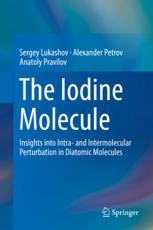

Most ebook files are in PDF format, so you can easily read them using various software such as Foxit Reader or directly on the Google Chrome browser.
Some ebook files are released by publishers in other formats such as .awz, .mobi, .epub, .fb2, etc. You may need to install specific software to read these formats on mobile/PC, such as Calibre.
Please read the tutorial at this link: https://ebookbell.com/faq
We offer FREE conversion to the popular formats you request; however, this may take some time. Therefore, right after payment, please email us, and we will try to provide the service as quickly as possible.
For some exceptional file formats or broken links (if any), please refrain from opening any disputes. Instead, email us first, and we will try to assist within a maximum of 6 hours.
EbookBell Team

4.8
84 reviewsThis book presents experimental and theoretical spectroscopic studies performed over the last 25 years on the iodine molecule’s excited states and their perturbations. It is going to be of interest to researchers who study intra- and intermolecular perturbations in diatomic molecules and more complex systems.
The book offers a detailed treatment of the nonadiabatic perturbations of valence, ion-pair and Rydberg states induced by intramolecular as well as intermolecular interactions in collisions or in weakly-bound complexes. It also provides an overview of current instrumentation and techniques as well as theoretical approaches describing intra- and intermolecular perturbations.
The authors are experts in the use of spectroscopy for the study of intrinsic and collision-induced perturbations in diatomic iodine. They introduced a new method of three-step optical population of the iodine ion-pair states. The iodine molecule has 23 valence states correlating with three dissociation limits, 20 so-called ion-pair states, nestled in four tiers and a multitude of Rydberg states. All the states have different angular momenta, parities and very dense rovibronic levels. Moreover, perturbations caused by atomic or molecular partners lead to effective nonadiabatic transitions. For these reasons the authors propose this molecule as a model system for spectroscopic studies of intra- and intermolecular perturbations in other diatomic molecules.